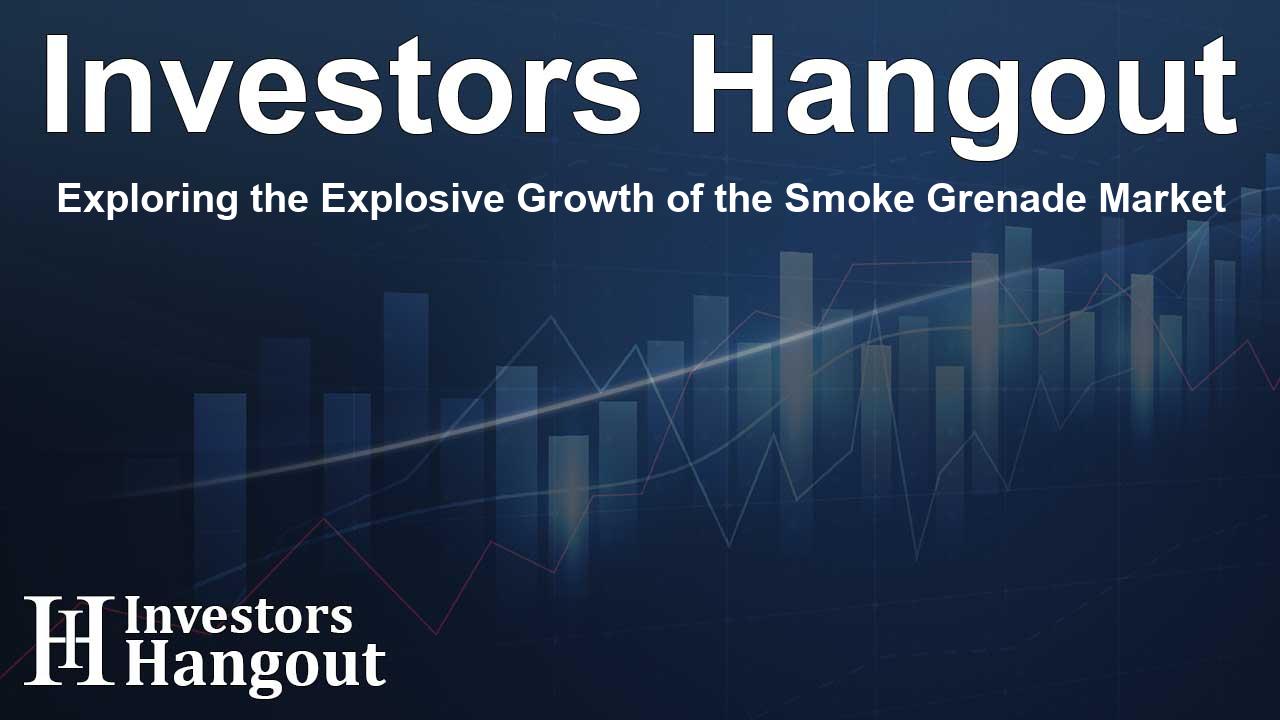Exploring the Explosive Growth of the Smoke Grenade Market

Smoke Grenade Market: A Booming Industry
The global smoke grenade market is on the verge of significant transformation, with projections indicating an impressive market size of $456.46 million in the near future. This remarkable growth trajectory is fueled by various factors, including an increasing preference for handheld multi-shot grenade launchers, the demand for environmental safety, and a surge in governmental initiatives aimed at research and development related to lightweight, eco-friendly smoke grenades.
Understanding the Trends in the Market
According to an insightful market study, the smoke grenade arena encompasses various segments, such as burst smoke, micro smoke, and wire pull smoke grenades. Each type serves specific applications including signaling, screening, riot control, and beyond. These products are pivotal in various sectors, particularly in military and defense operations where they provide essential support during critical missions.
Types and Applications of Smoke Grenades
Smoke grenades can be categorized primarily as hand-operated and launcher-operated. The hand-operated variety currently dominates the market due to its versatility and ease of use in various scenarios, especially in military applications. Additionally, applications span ground-to-air signaling, enhancing emergency response operations, and securing landing zones, which are crucial in critical situations.
The Role of Military Expenditure
The rising global military expenditure plays a vital role in driving the smoke grenade market forward. With governments around the world prioritizing national security, there is a noticeable increase in budget allocations toward advanced military technologies and equipment. Such investments often include procuring state-of-the-art pyrotechnics and other essential non-lethal products, which further emphasizes the need for reliable smoke grenade systems.
Commercial Applications and Growth Prospects
Alongside military use, the commercial sector is witnessing an upsurge in the adoption of smoke grenades for various purposes. Their application in photography, film productions, vocational training, and even recreational activities such as paintball gaming showcases their versatility. This growing acceptance across diverse industries provides a promising avenue for market expansion as more consumers begin to appreciate the utility and excitement that smoke grenades can offer.
Geographical Insights on Market Growth
As of now, North America holds a significant share of the smoke grenade market, closely followed by regions like Europe and Asia Pacific. Looking ahead, Asia Pacific is projected to exhibit the highest growth rate, driven by increased demand for smoke grenades across multiple applications, including both military operations and commercial use.
Competitive Landscape of the Smoke Grenade Market
Numerous key players are instrumental in shaping the competitive landscape of the smoke grenade market. Companies like Arsenal, Rheinmetall AG, and Chemring Group Plc are not only innovating but also expanding their geographical footprint to tap into growing markets. Their strategies encompass new product launches and strategic partnerships aimed at enhancing their market presence and fulfilling the evolving needs of various sectors.
Final Thoughts on Market Opportunities
With a projected market size of $456.46 million by the end of the forecast period, the smoke grenade segment presents multiple opportunities for stakeholders from raw material suppliers to end-users. By leveraging market insights, suppliers and manufacturers can strategically position themselves to benefit from this rapidly evolving industry landscape and capitalize on emerging trends.
Frequently Asked Questions
1. What factors are driving the growth of the smoke grenade market?
The growth is driven primarily by the increasing use in military applications, rising global military expenditure, and expanded commercial applications.
2. What types of smoke grenades are most popular?
Hand-operated smoke grenades currently hold a larger market share due to their ease of use and effectiveness in various scenarios.
3. Which regions show significant potential for market growth?
North America leads the market currently, but Asia Pacific is expected to register the highest growth in the coming years.
4. How are smoke grenades used in commercial applications?
They are utilized in photography, film production, crowd control, and recreational activities like paintball gaming.
5. Who are the major players in the smoke grenade market?
Key players include Arsenal, Rheinmetall AG, and Chemring Group Plc, among others, focusing on innovation and market expansion.
About Investors Hangout
Investors Hangout is a leading online stock forum for financial discussion and learning, offering a wide range of free tools and resources. It draws in traders of all levels, who exchange market knowledge, investigate trading tactics, and keep an eye on industry developments in real time. Featuring financial articles, stock message boards, quotes, charts, company profiles, and live news updates. Through cooperative learning and a wealth of informational resources, it helps users from novices creating their first portfolios to experts honing their techniques. Join Investors Hangout today: https://investorshangout.com/
Disclaimer: The content of this article is solely for general informational purposes only; it does not represent legal, financial, or investment advice. Investors Hangout does not offer financial advice; the author is not a licensed financial advisor. Consult a qualified advisor before making any financial or investment decisions based on this article. The author's interpretation of publicly available data shapes the opinions presented here; as a result, they should not be taken as advice to purchase, sell, or hold any securities mentioned or any other investments. The author does not guarantee the accuracy, completeness, or timeliness of any material, providing it "as is." Information and market conditions may change; past performance is not indicative of future outcomes. If any of the material offered here is inaccurate, please contact us for corrections.